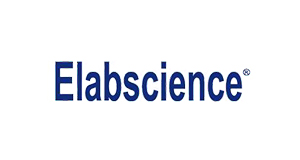Recombinant Swine TGF beta 1 protein(N-His)(active)
Recombinant Swine TGF beta 1 protein(N-His)(active)
Artikelnummer
ELSPKSS000014-5
Verpackungseinheit
5 µg
Hersteller
Elabscience Biotechnology
Verfügbarkeit:
wird geladen...
Preis wird geladen...
Abbreviation: TGF beta 1
Target Synonym: Differentiation inhibiting factor;Cartilage-inducing factor
Target Species: Porcine
Expression Host: E.coli
Fusion Tag: N-His
UNIProt ID: P07200
Background: TGF-beta 1 is a member of the transforming growth factor beta (TGF-beta) family. The transforming growth factor-beta family of polypeptides are involved in the regulation of cellular processes, including cell division, differentiation, motility, adhesion and death. TGF-beta 1 positively and negatively regulates many other growth factors. It inhibits the secretion and activity of many other cytokines including interferon-γ, tumor necrosis factor-alpha and various interleukins. It can also decrease the expression levels of cytokine receptors. Meanwhile, TGF-beta 1 also increases the expression of certain cytokines in T cells and promotes their proliferation, particularly if the cells are immature. TGF-beta 1 also inhibits proliferation and stimulates apoptosis of B cells, and plays a role in controlling the expression of antibody, transferrin and MHC class II proteins on immature and mature B cells. TGF-beta 1 is a multifunctional protein that controls proliferation, differentiation and other functions in many cell types. It plays an important role in bone remodeling as it is a potent stimulator of osteoblastic bone formation, causing chemotaxis, proliferation and differentiation in committed osteoblasts. Once cells lose their sensitivity to TGF-beta1-mediated growth inhibition, autocrine TGF-beta signaling can promote tumorigenesis. Elevated levels of TGF-beta1 are often observed in advanced carcinomas, and have been correlated with increased tumor invasiveness and disease progression.
Activity: Measure by its ability to inhibit IL-4-induce proliferation in HT-2 cells. The ED50 for this effect is < 0.1 ng/mL.
Sequence: MPPSGLRLLPLLLPLLWLLVLTPGRPAAGLSTCKTIDMELVKRKRIEAIRGQILSKLRLASPPSQGDVPPGPLPEAVLALYNSTRDRVAGESVEPEPEPEADYYAKEVTRVLMVESGNQIYDKFKGTPHSLYMLFNTSELREAVPEPVLLSRAELRLLRLKLKVEQHVELYQKYSNDSWRYLSNRLLAPSDSPEWLSFDVTGVVRQWLTRREAIEGFRLSAHCSCDSKDNTLHVEINGFNSGRRGDLATIHGMNRPFLLLMATPLERAQHLHSSRHRRALDTNYCFSSTEKNCCVRQLYIDFRKDLGWKWIHEPKGYHANFCLGPCPYIWSLDTQYSKVLALYNQHNPGASAAPCCVPQALEPLPIVYYVGRKPKVEQLSNMIVRSCKCS
Purity: > 98 % as determined by reducing SDS-PAGE.
Formulation: Lyophilized from a solution containing 20 mM sodium citrate, 0.2 M NaCl, pH 4.5.
Normally 5 % - 8 % trehalose, mannitol and 0.01% Tween80 are added as protectants before lyophilization.
Please refer to the specific buffer information in the printed manual.
Endotoxin: Please contact us for more information.
Target Synonym: Differentiation inhibiting factor;Cartilage-inducing factor
Target Species: Porcine
Expression Host: E.coli
Fusion Tag: N-His
UNIProt ID: P07200
Background: TGF-beta 1 is a member of the transforming growth factor beta (TGF-beta) family. The transforming growth factor-beta family of polypeptides are involved in the regulation of cellular processes, including cell division, differentiation, motility, adhesion and death. TGF-beta 1 positively and negatively regulates many other growth factors. It inhibits the secretion and activity of many other cytokines including interferon-γ, tumor necrosis factor-alpha and various interleukins. It can also decrease the expression levels of cytokine receptors. Meanwhile, TGF-beta 1 also increases the expression of certain cytokines in T cells and promotes their proliferation, particularly if the cells are immature. TGF-beta 1 also inhibits proliferation and stimulates apoptosis of B cells, and plays a role in controlling the expression of antibody, transferrin and MHC class II proteins on immature and mature B cells. TGF-beta 1 is a multifunctional protein that controls proliferation, differentiation and other functions in many cell types. It plays an important role in bone remodeling as it is a potent stimulator of osteoblastic bone formation, causing chemotaxis, proliferation and differentiation in committed osteoblasts. Once cells lose their sensitivity to TGF-beta1-mediated growth inhibition, autocrine TGF-beta signaling can promote tumorigenesis. Elevated levels of TGF-beta1 are often observed in advanced carcinomas, and have been correlated with increased tumor invasiveness and disease progression.
Activity: Measure by its ability to inhibit IL-4-induce proliferation in HT-2 cells. The ED50 for this effect is < 0.1 ng/mL.
Sequence: MPPSGLRLLPLLLPLLWLLVLTPGRPAAGLSTCKTIDMELVKRKRIEAIRGQILSKLRLASPPSQGDVPPGPLPEAVLALYNSTRDRVAGESVEPEPEPEADYYAKEVTRVLMVESGNQIYDKFKGTPHSLYMLFNTSELREAVPEPVLLSRAELRLLRLKLKVEQHVELYQKYSNDSWRYLSNRLLAPSDSPEWLSFDVTGVVRQWLTRREAIEGFRLSAHCSCDSKDNTLHVEINGFNSGRRGDLATIHGMNRPFLLLMATPLERAQHLHSSRHRRALDTNYCFSSTEKNCCVRQLYIDFRKDLGWKWIHEPKGYHANFCLGPCPYIWSLDTQYSKVLALYNQHNPGASAAPCCVPQALEPLPIVYYVGRKPKVEQLSNMIVRSCKCS
Purity: > 98 % as determined by reducing SDS-PAGE.
Formulation: Lyophilized from a solution containing 20 mM sodium citrate, 0.2 M NaCl, pH 4.5.
Normally 5 % - 8 % trehalose, mannitol and 0.01% Tween80 are added as protectants before lyophilization.
Please refer to the specific buffer information in the printed manual.
Endotoxin: Please contact us for more information.

 English
English










